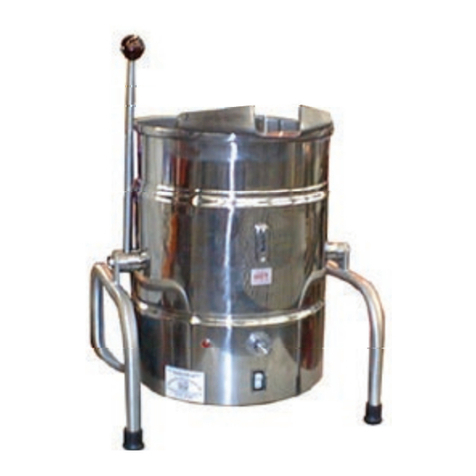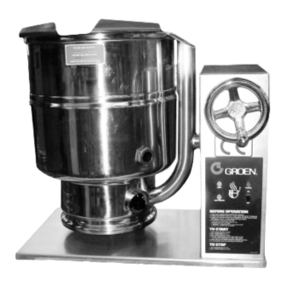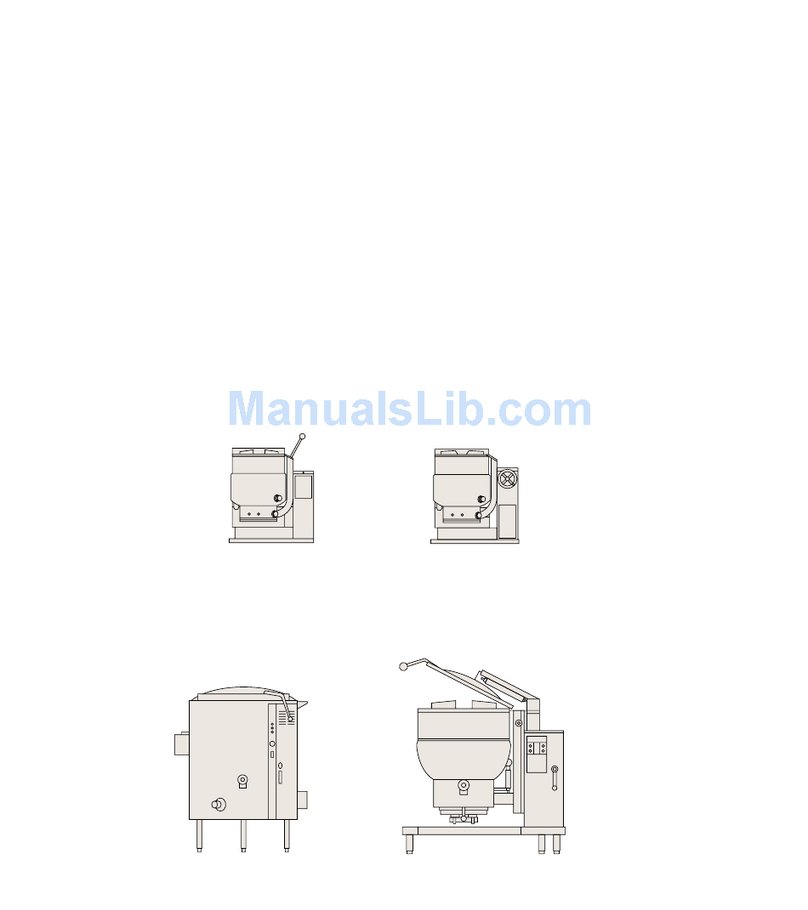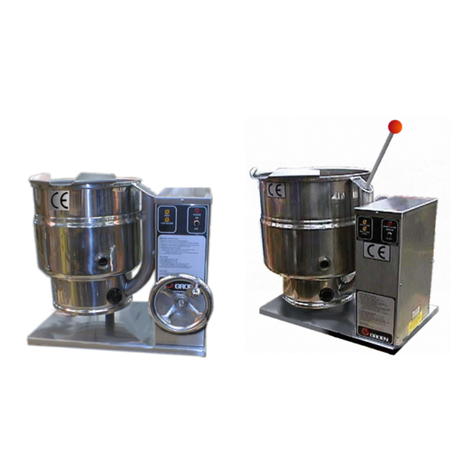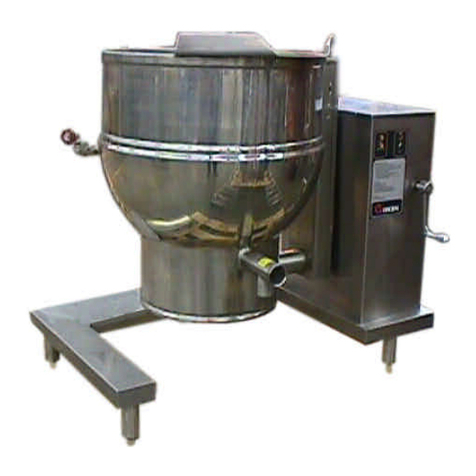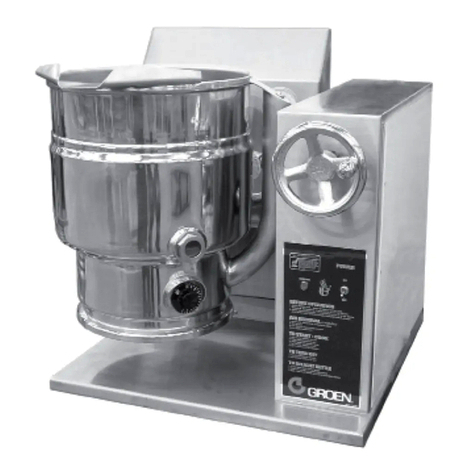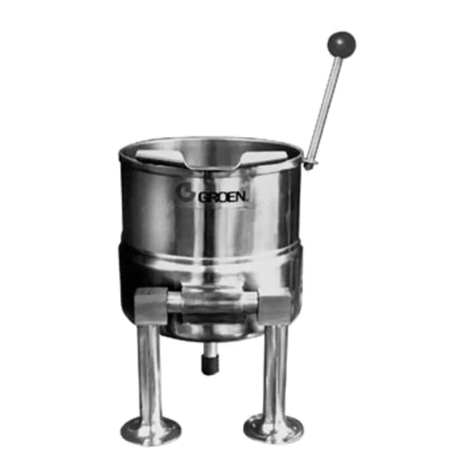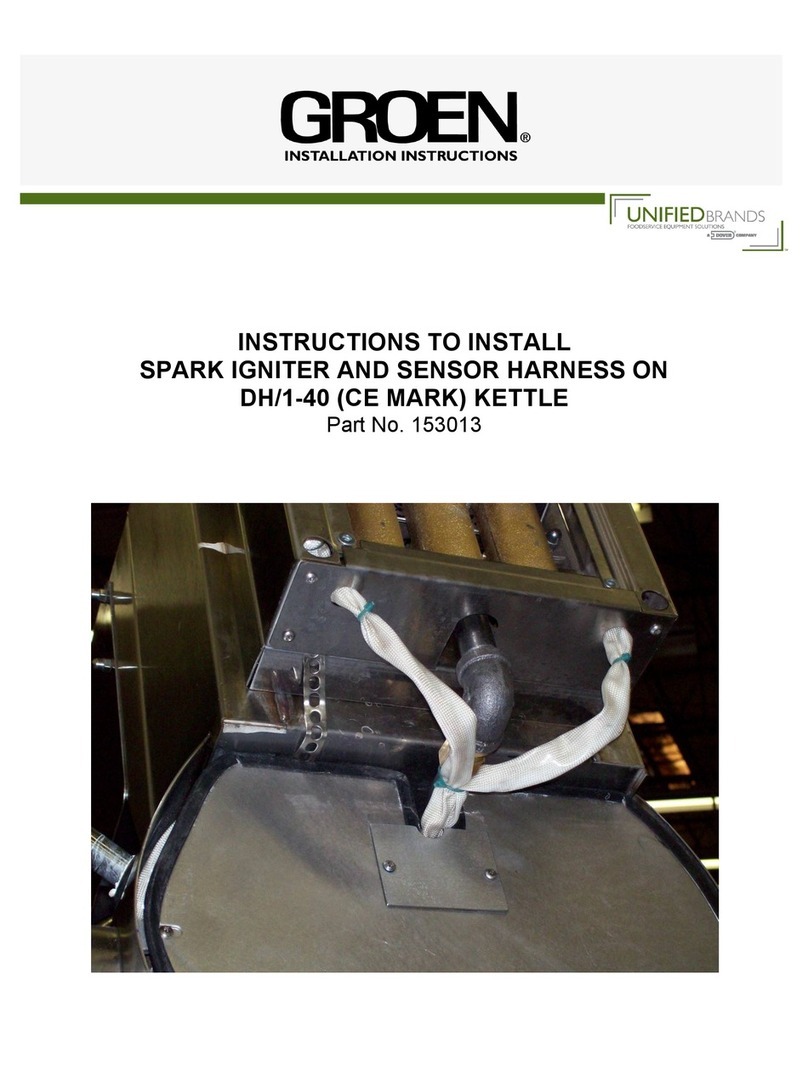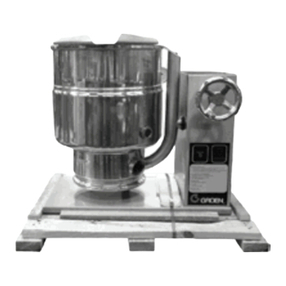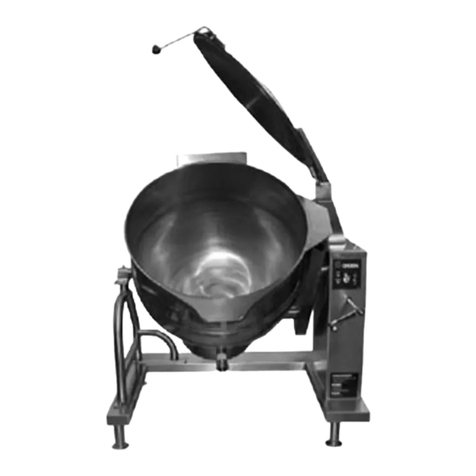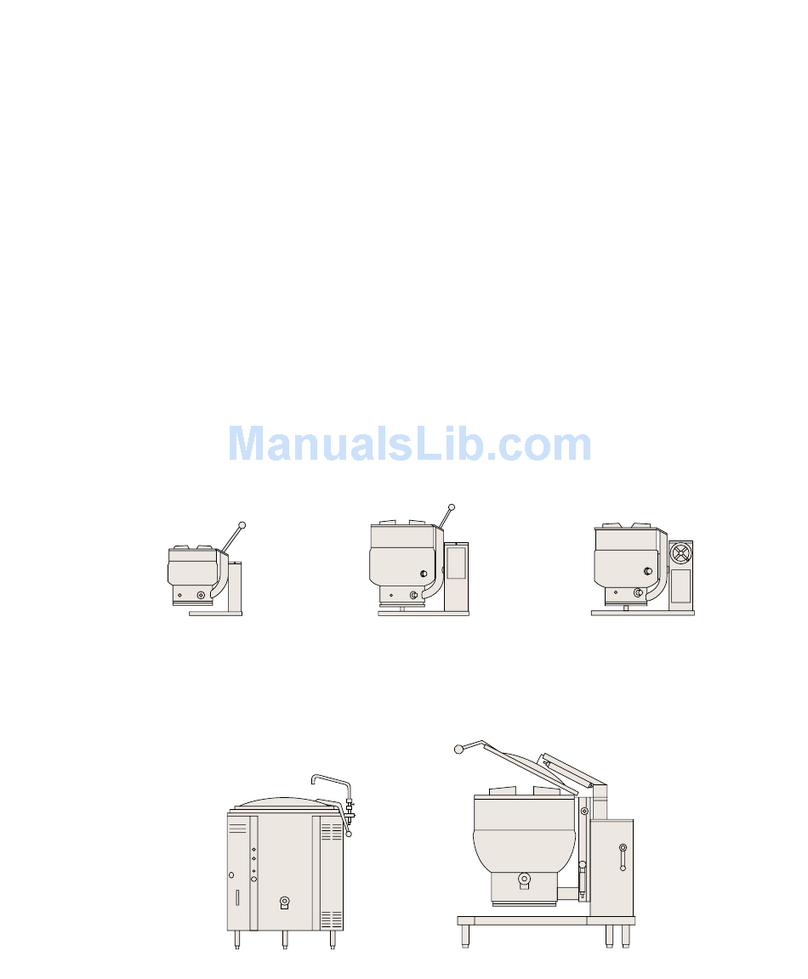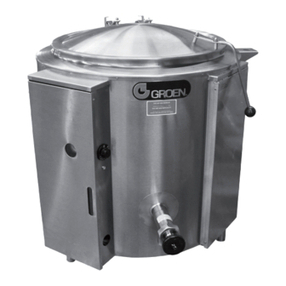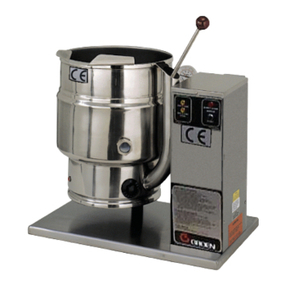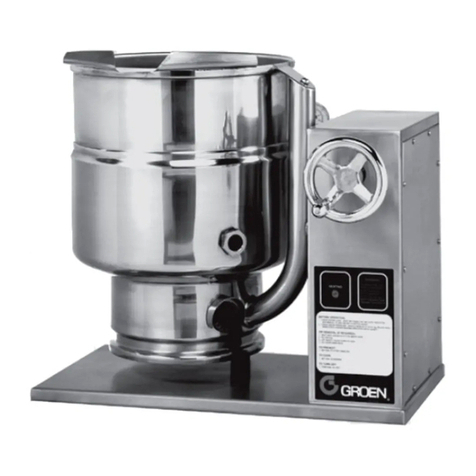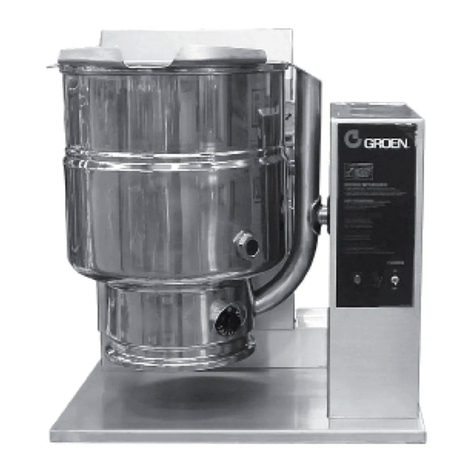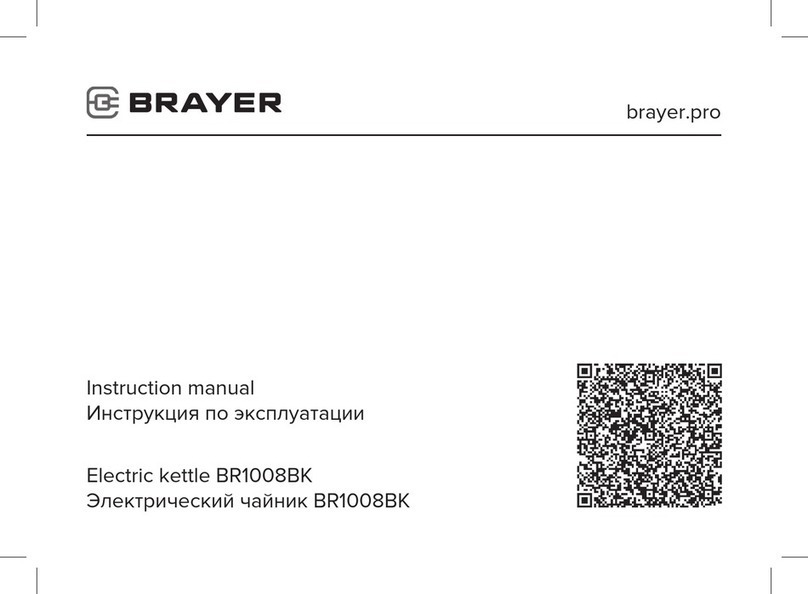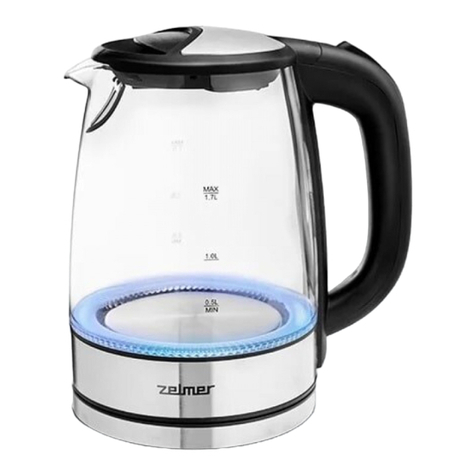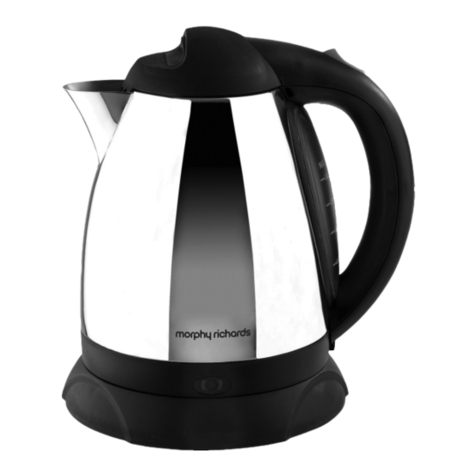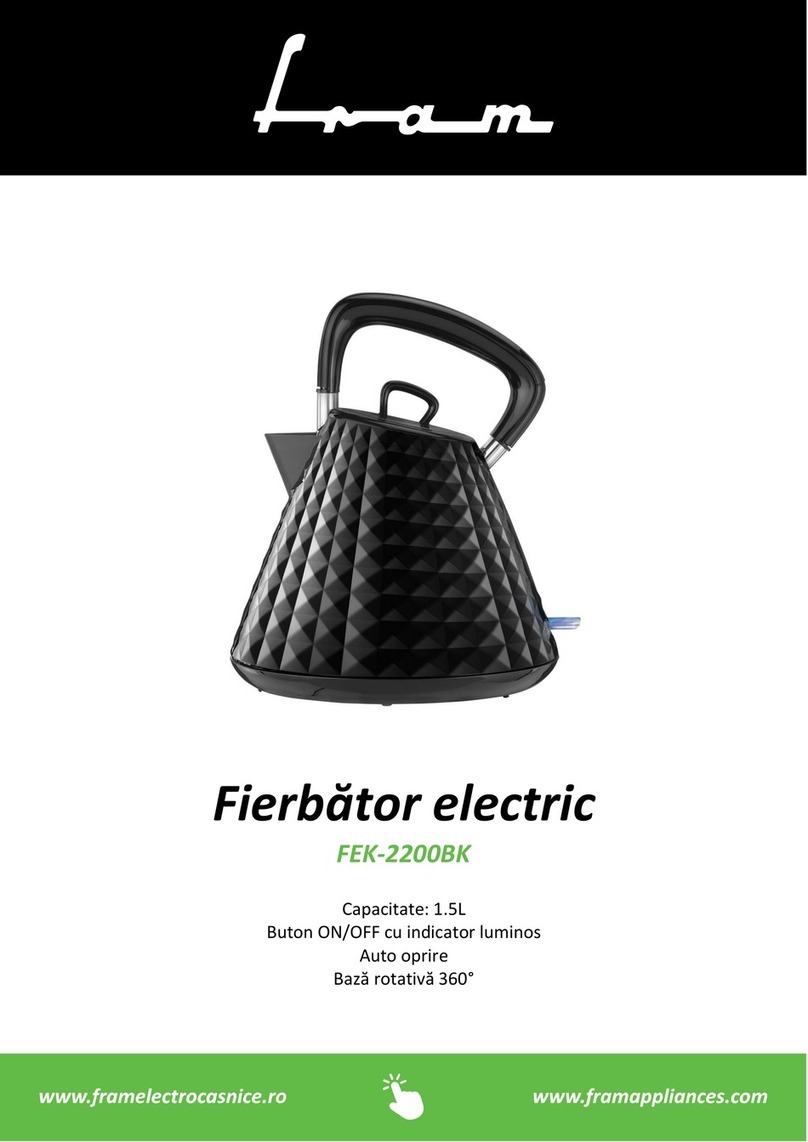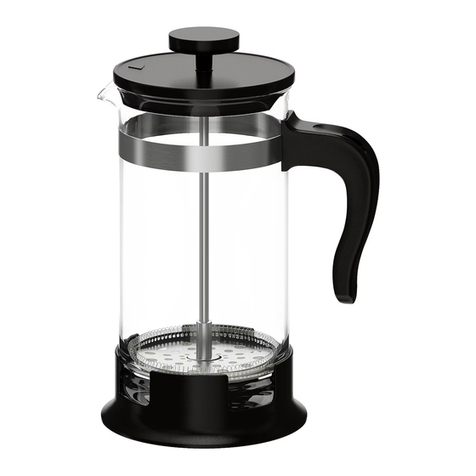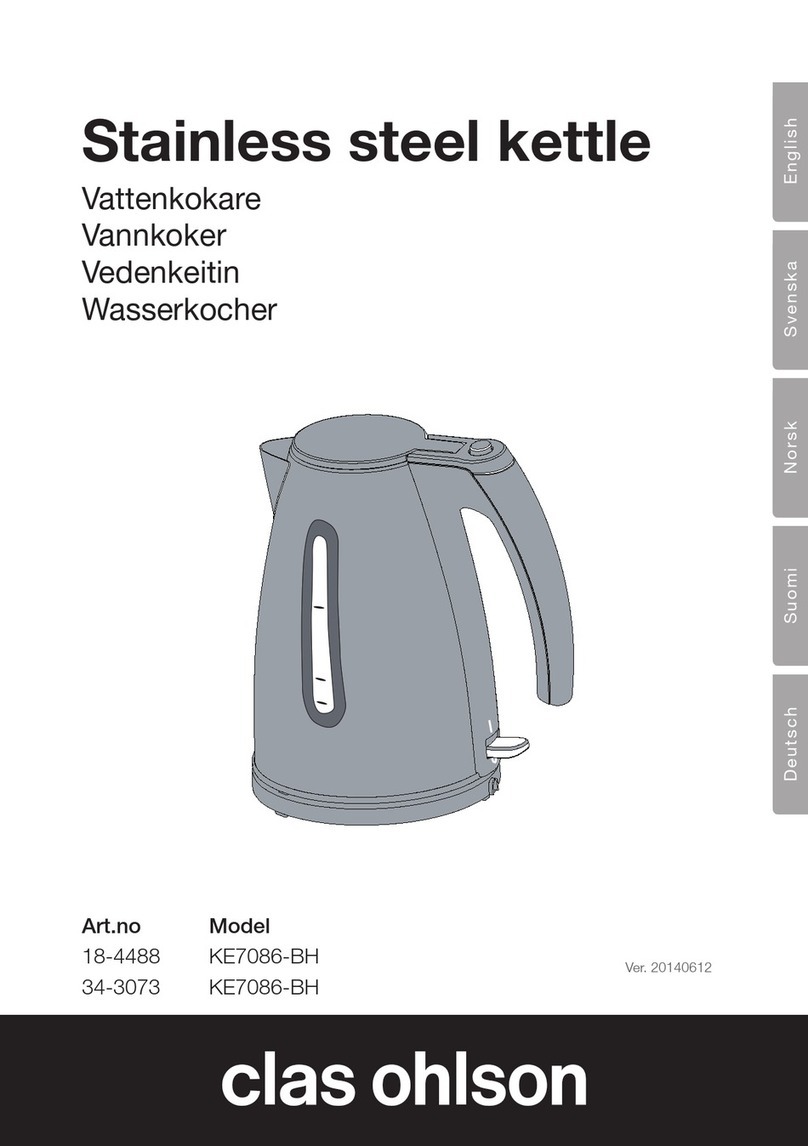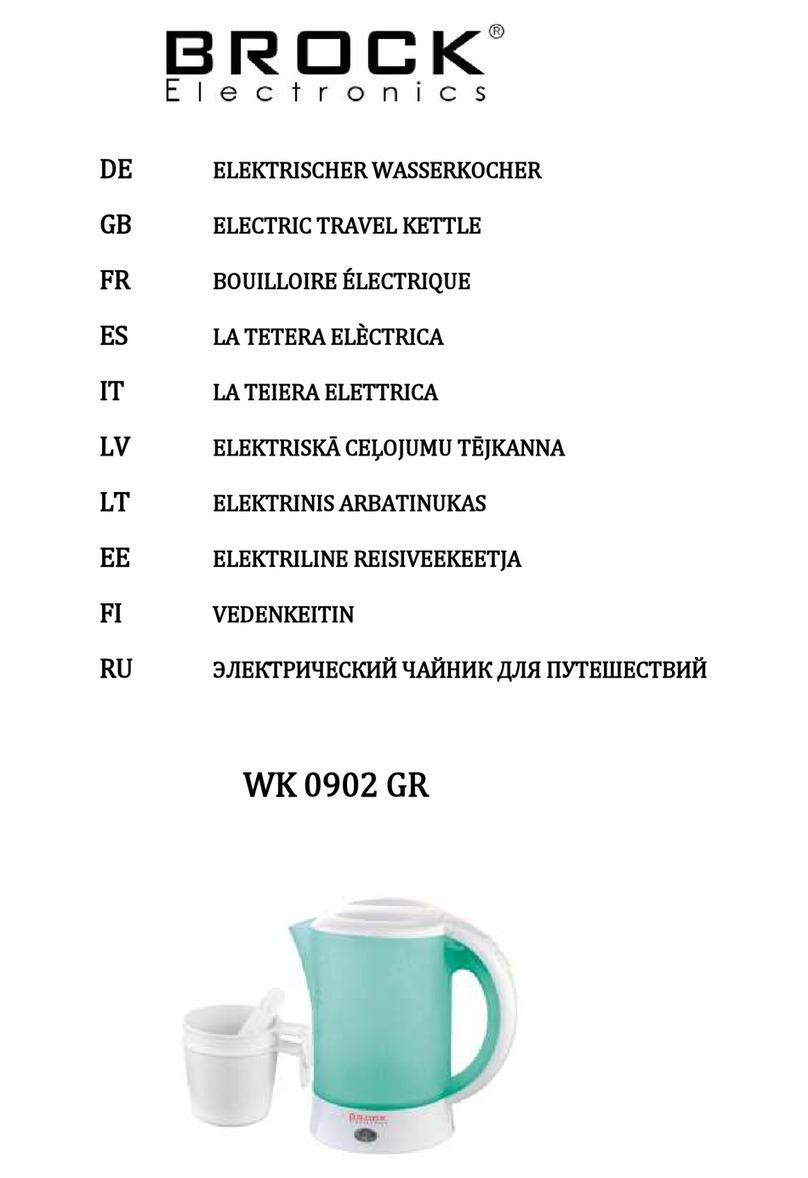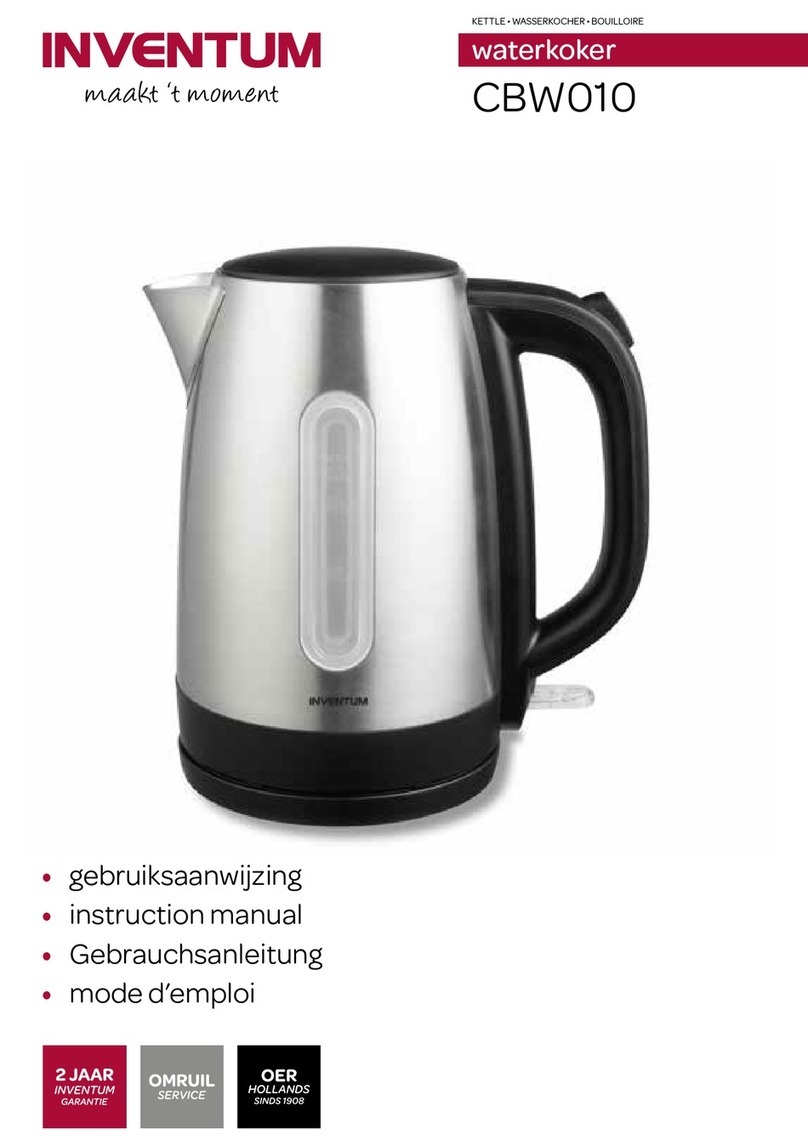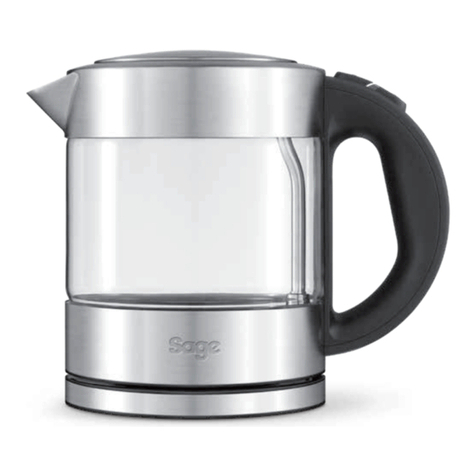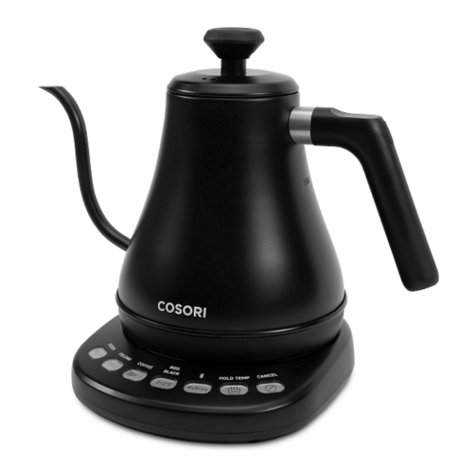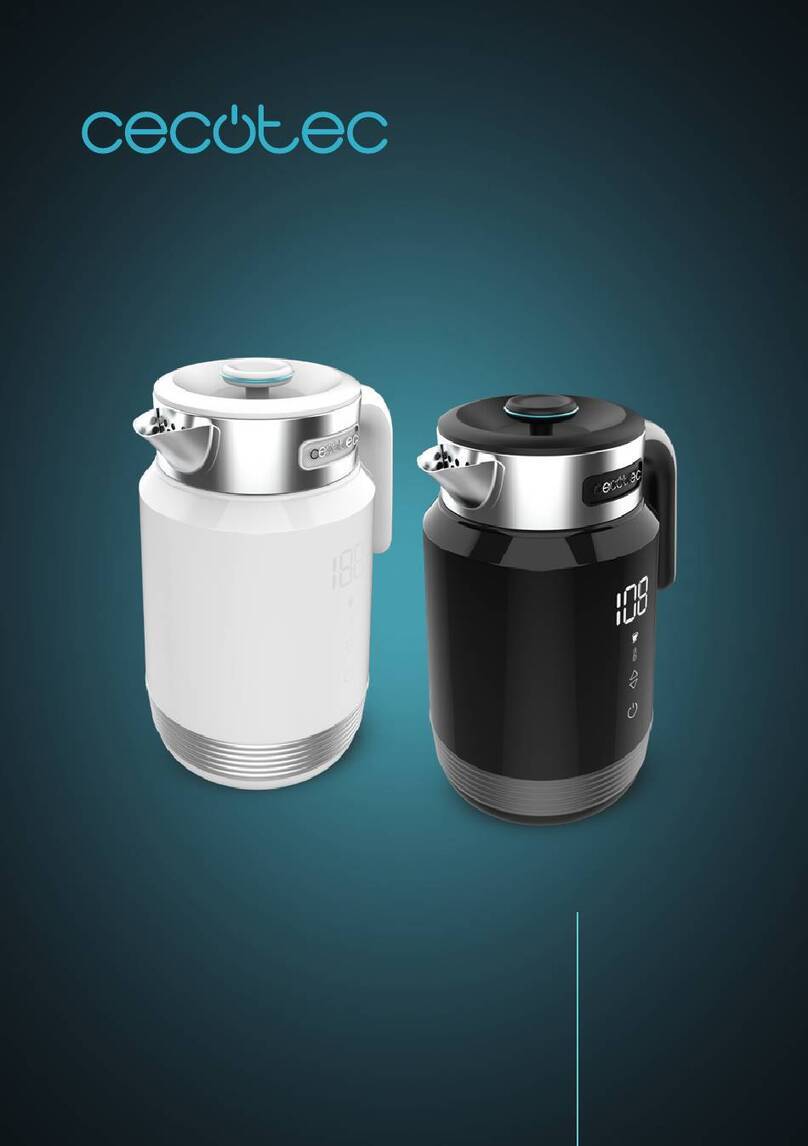
OM-DEES 9
Operation
The operator controls kettle heating with the thermostat dial. The dial turns heating
element power on or off and sets the kettle operating temperature.
A. Controls
1. Classic Control Models
a. Lighted Power ON switch located on the control console. Controls
main power to the unit.
b. The temperature knob, located on the control console, is used to set
the kettle heat values between 1 and 10.
c. Heating indicator light located on the control console, lights when the
controller energizes the heating elements and will cycle on and off
once the unit reaches set temperature. If the unit is tilted, the heating
elements will be disabled and the light will turn off until the unit is
returned to the cooking position.
d. A LOW WATER indicator light, located on the control console,
illuminates when the jacket water falls below acceptable levels.
When lit, the heating elements are disabled and will not function
until the jacket water is refilled using the procedure on p. 16 of this
manual.
e. Crank tilt - a handle controls the worm and gear mechanism that
smoothly tilts the kettle body and holds it in the desired position.
2. Advanced Control Models
a. Lighted Power ON switch located on the control console. Controls
main power to the unit.
b. The temperature knob, located on the control console, is used to set
the kettle heat values between 1 and 10. The current setting will be
reflected on the display.
c. Heating indicator light located on the control console, lights when the
controller energizes the heating elements and will cycle on and off
once the unit reaches set temperature. If the unit is tilted, the heating
elements will be disabled and the light will turn off until the unit is
returned to the cooking position.
d. A LOW WATER indicator light, located on the control console,
illuminates when the jacket water falls below acceptable levels.
When lit, the heating elements are disabled and will not function
until the jacket water is refilled using the procedure on p. 16 of this
manual.
e. SET TnnP Mode - Allows power to the controller without the kettle
heating; the kettle will heat once the LOW TEMP, MANUAL or HIGH
TEMP button is selected.
f. LOW TEMP Button – Used to set operating temperature of the kettle
at a preset low intensity (default = 2). Can be pressed at any time
during operation of the unit to change the set temperature to the
preset value except when there is an active TIMER enabled.
g. MANUAL Mode button – Enables the user modify the desired cooking
temperature of the kettle (between 1 and 10) using the temperature
knob and display (default = 4). The operator will press the MANUAL
button and set the desired temperature using the temperature knob
and display. Once the desired temperature is reached, the user may
either press the MANUAL button again or wait 5 seconds and the set
temperature will be accepted by the controller and locked in. After
the set temperature is accepted, it may be changed at any time by
pressing the MANUAL button and resetting the temperature using the
CAUTION
DO NOT OVERFILL THE KETTLE WHEN
COOKING, HOLDING OR CLEANING. KEEP
LIQUIDS AT LEAST 2-3” (5-8 cm) BELOW
THE KETTLE BODY RIM TO ALLOW
CLEARANCE FOR STIRRING, BOILING
PRODUCT AND SAFE TRANSFER.
Classic Control
Advanced Control
